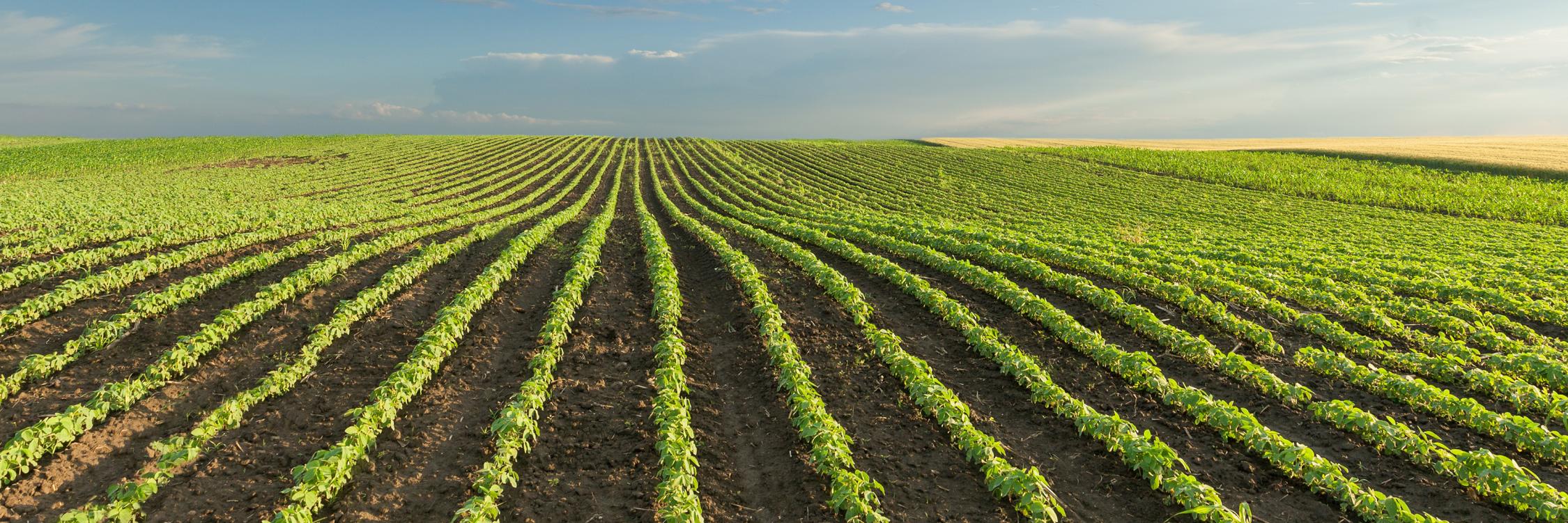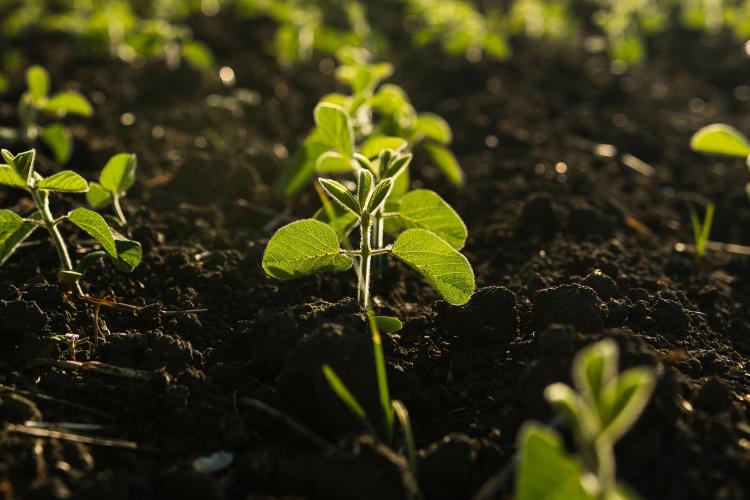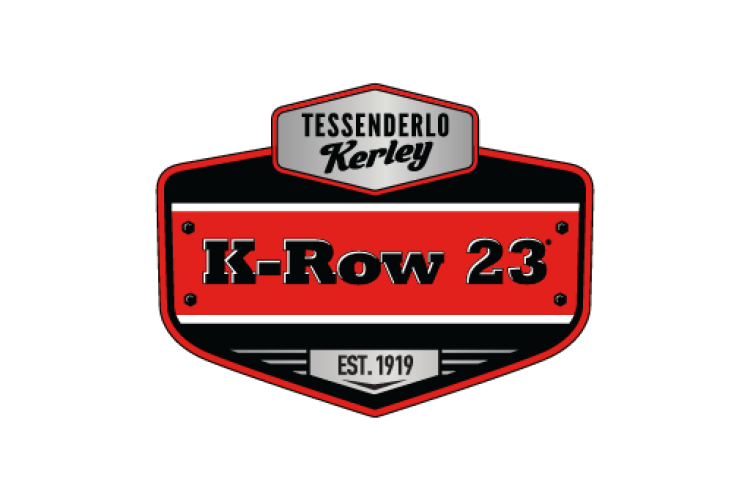
Two Key Nutrients for a Strong Soybean Crop
Potassium and sulfur – both available in K-Row 23® – can boost early-season plant growth and improve yields when applied in-furrow.
In their quest to reap increased yields, Midwestern soybean growers have taken advantage of the situation presented to them. Improved genetics in soybean seeds have allowed growers to plant earlier in cooler soil and environmental conditions without harming seeds.
But the situation isn’t absolute. One challenge with planting in colder soil is that sulfur – an essential nutrient for crops – isn’t as available for plants to take up, which can negatively affect crop health, says Elizabeth Lemings, Ph.D., Midwest Regional Agronomist.
Soil organic matter serves as a significant sulfur source. However, plants cannot access that sulfur until it has been mineralized in the soil by microorganisms into the plant-available form, sulfate (S042-).
Lemings says microorganisms are less active in cold environments, leading to less sulfur availability in these early planting conditions. Also, heavy residue-covered soil or poorly drained soils tend to be colder, leading to increased sulfur deficiencies. This can become problematic, as soybeans are an oilseed crop and require more sulfur for the synthesis of oil, according to The Sulphur Institute.
A sulfur deficiency in colder soils can reduce or delay plant growth, which can impact overall crop quality, Lemings says. The good news is K-Row 23 from Crop Vitality was specifically created to address this situation.
“As genetics in soybeans were improving and growers were pushing the yield envelope by moving those planting dates earlier, they recognized the need for early-season sulfur,” Lemings says. “That’s why Crop Vitality introduced K-Row 23, a unique chemistry that fits this specific market, providing 8% sulfur with 24% potassium.”
K-Row 23 supplies a seed-safe form of liquid sulfur and potassium, both of which are critical to early developing seedlings. It contains one pound of sulfur and 2.6 pounds of potassium in each gallon. According to Crop Vitality, germinating seeds rely on nutrients stored in the soil to provide vital energy for root growth. Additionally, K-Row 23’s low salt-out temperature helps growers and retailers with the storage of this product in the colder seasons.
By using K-Row 23, Lemings says plants get the sulfur they need when they it, leading to a strong root system and more vigorous plant growth overall, which has been “eye opening” to many growers.

The Potassium Factor
K-Row 23’s potassium component has also impressed growers, which is positive news considering soybeans can frequently experience a potassium deficiency. Until K-Row 23 was developed, there were very limited potassium sources available for in-furrow fertilization of soybeans, Lemings says.
“There were a few fertilizer options made with KOH (potassium hydroxide), where growers could apply a maximum of three pounds of K2O per acre in-furrow,” she says. “But with K-Row 23’s seed-safe chemistry and how it reacts in the soil, growers can apply over three times as much potassium in-furrow on soybeans without fear of hurting germination. That’s a substantial improvement and advantage to the grower.”
The fact that growers can safely use three times more potassium is a substantial benefit. “They understand how trusted this product can be,” Lemings says.
Generally, starter fertilizers are important for getting nutrients to developing seedlings early to get the crop started in the right direction, Lemings says. There are several options to place those starter fertilizers, including in-furrow and out of furrow. Because K-Row 23 can be applied in-furrow, it provides seeds with almost immediate access to potassium and sulfur. Research often shows that the closer that nutrients are applied to the seed furrow, the greater the yield.
Still, reasonable caution must be taken when applying K-Row 23 in-furrow as with any in-furrow fertilizer product. “When we place liquid fertilizers in-furrow with seed, we must be conscious of what forms those nutrients are in and the rates and concentrations we use,” says Lemings, who notes that moisture tends to move to areas with higher concentrations of salts via osmosis. “If there’s a high concentration of salt around the seed, it may draw some of that moisture away from the seeds rather than letting the seeds absorb it,” she says.
Lemings says growers should maintain the recommended rate of 2 to 4 gallons per acre in-furrow for soybeans. In drier and sandier planting conditions, growers should use the lower rate due to the lack of soil moisture and the soil’s reduced ability to buffer that salt concentration.
“Growers should be mindful of soil moisture conditions and the soil texture to apply the best rate that will be most beneficial to crop performance,” Lemings says.
Depending on environmental conditions, trial results have shown an increase in soybean yields of 2 to 5 bushels per acre from the application of K-Row 23 alone.
“K-Row 23 brings value to the table by itself,” she says. “But when combined with a well-balanced fertility program where growers are pushing to get an extra few bushels and boost their economic return, K-Row 23 is the product that can provide them that extra edge.”

Seed & Transplant Safe
- Potassium Sulfite
- 23% K2O, 8% Sulfur
- Versatile, blends with many fertilizers
- pH neutral reaction, can use on low pH soils